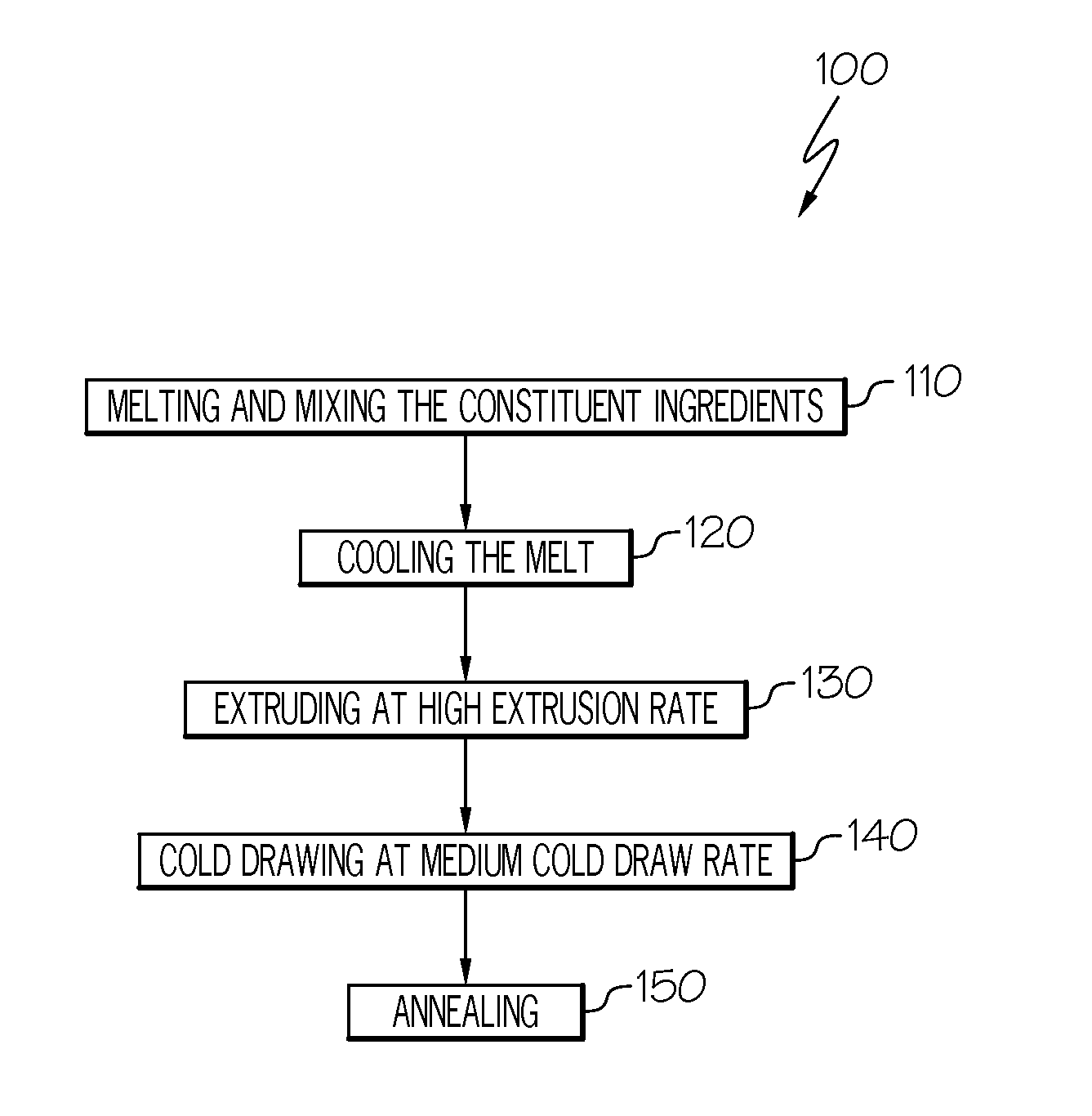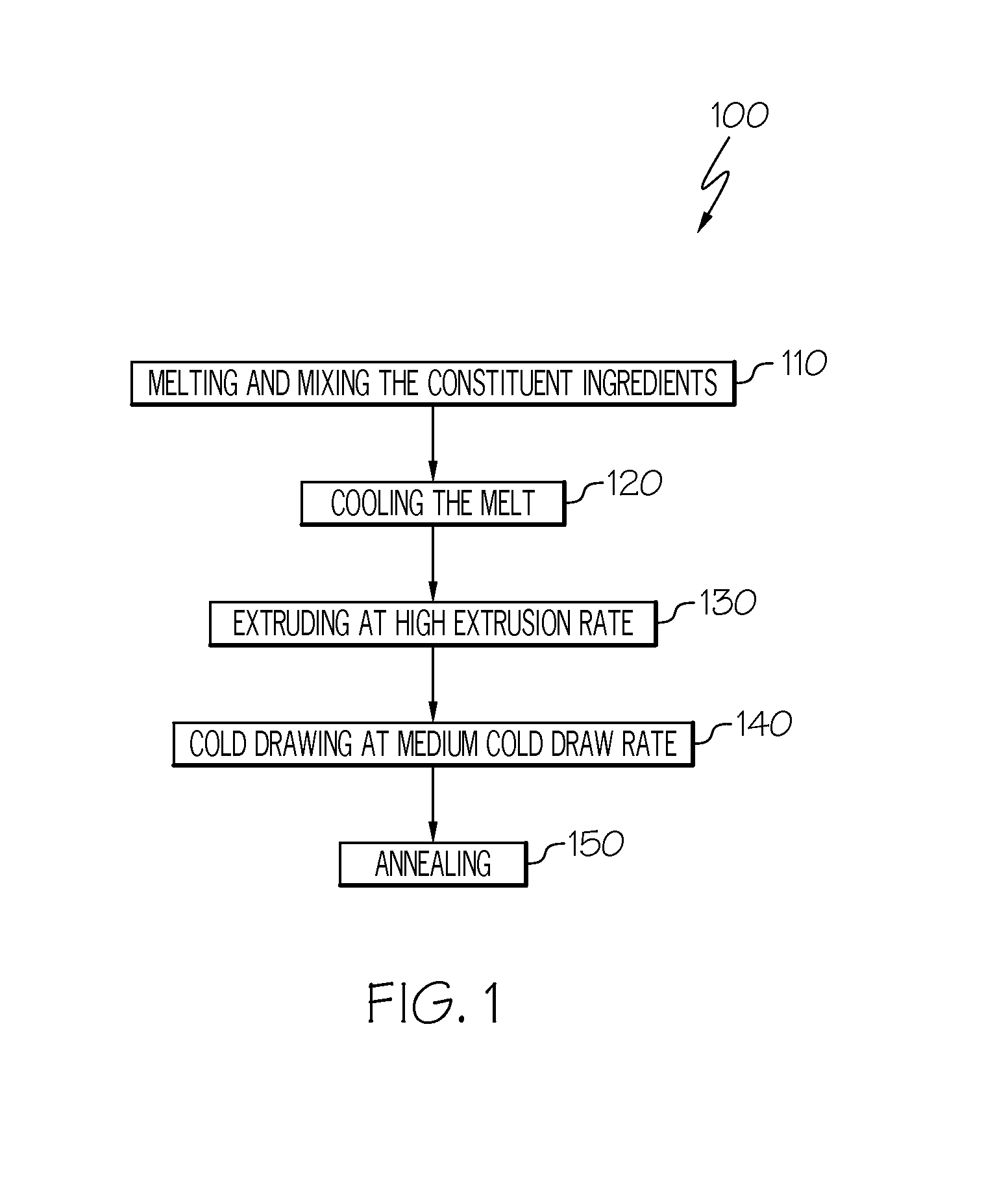Brass alloys for use in turbocharger bearing applications
a technology for turbocharger bearings and brass alloys, which is applied in the direction of engine components, rotary machine parts, mechanical equipment, etc., can solve the problems of inability to meet the requirements of europe elv directives, prior art alloys that do not include a percentage, and passenger vehicles that have more stringent requirements than commercial vehicles, etc., to facilitate the generation of the phase, large zinc equivalents, and effective for strengthening the matrix
- Summary
- Abstract
- Description
- Claims
- Application Information
AI Technical Summary
Benefits of technology
Problems solved by technology
Method used
Image
Examples
Embodiment Construction
[0010]The following detailed description is merely exemplary in nature and is not intended to limit the invention or the application and uses of the invention. As used herein, the word “exemplary” means “serving as an example, instance, or illustration.” Thus, any embodiment described herein as “exemplary” is not necessarily to be construed as preferred or advantageous over other embodiments. All of the embodiments and implementations of the gas turbine engine components and methods for the manufacture thereof described herein are exemplary embodiments provided to enable persons skilled in the art to make or use the invention and not to limit the scope of the invention, which is defined by the claims. Furthermore, there is no intention to be bound by any expressed or implied theory presented in the preceding technical field, background, brief summary, or the following detailed description.
[0011]The brass alloy for gas turbine engine applications, such as turbocharger bearing applica...
PUM
| Property | Measurement | Unit |
|---|---|---|
| elongation ratio | aaaaa | aaaaa |
| tensile strength Rm | aaaaa | aaaaa |
| tensile strength Rm | aaaaa | aaaaa |
Abstract
Description
Claims
Application Information
 Login to View More
Login to View More - R&D
- Intellectual Property
- Life Sciences
- Materials
- Tech Scout
- Unparalleled Data Quality
- Higher Quality Content
- 60% Fewer Hallucinations
Browse by: Latest US Patents, China's latest patents, Technical Efficacy Thesaurus, Application Domain, Technology Topic, Popular Technical Reports.
© 2025 PatSnap. All rights reserved.Legal|Privacy policy|Modern Slavery Act Transparency Statement|Sitemap|About US| Contact US: help@patsnap.com


